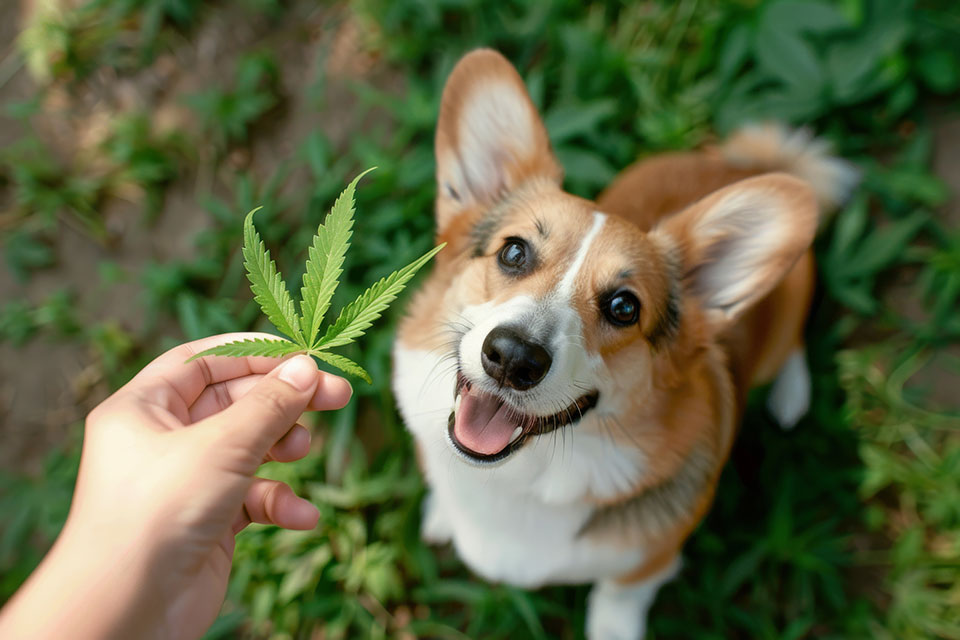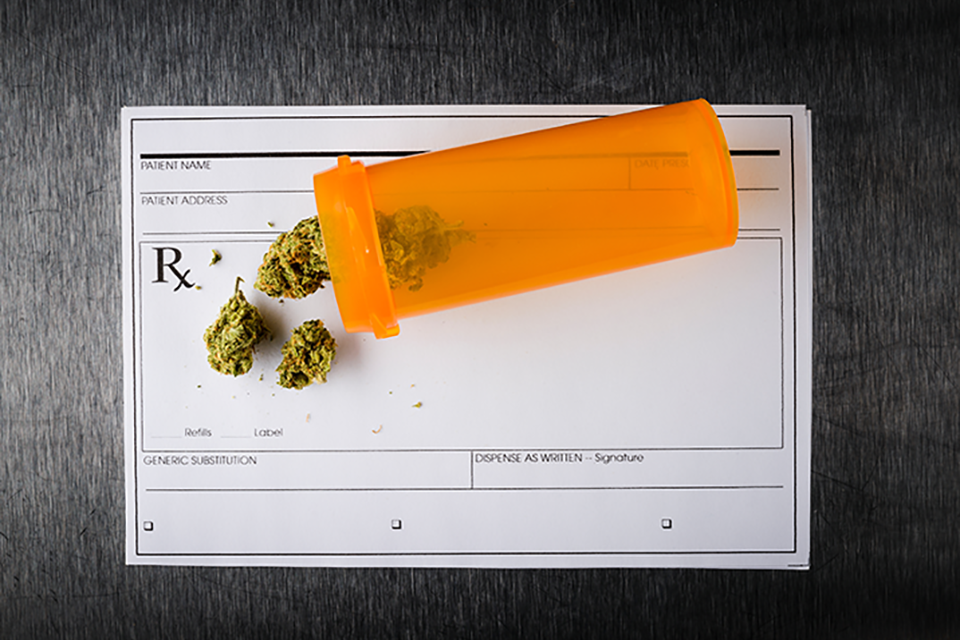
Can You Give Your Dog Cannabis Safely?
For cannabis cultivators with dogs, curiosity about cannabis and pet health is natural, but so is the need for caution. While cannabis contains compounds that may support wellness in humans, its effects on dogs are very different. Before considering it as an option for your pet, you need to know what’s appropriate, what to avoid, and how to proceed responsibly.
Cannabis for dogs, is it safe? The answer depends on the form, dosage, and—most critically—veterinary guidance. If you grow cannabis in the USA or Canada, learn how to protect your pet by understanding the risks, benefits, and safe practices before offering any form of cannabis.
Cannabis and Its Effects on Dogs
Cannabis contains two primary compounds: THC (tetrahydrocannabinol) and CBD (cannabidiol). THC is the psychoactive component that creates a high in humans. In dogs, even small amounts of THC can cause serious side effects, including confusion, lethargy, vomiting, and loss of coordination. In severe cases, it may lead to toxicity and require emergency care.
CBD, on the other hand, is non-psychoactive and has been studied for its potential therapeutic benefits in pets. Some research suggests it may help manage pain, inflammation, anxiety, and seizures—but only when used correctly and under veterinary supervision.
Key differences:
- THC: Psychoactive, not safe for pets, can cause harmful effects
- CBD: Non-psychoactive, potentially beneficial, but must be dosed precisely
- Whole plant cannabis: Should never be given to dogs due to unpredictable potency and THC exposure
Always separate what’s safe for you from what’s safe for your dog. Dogs process cannabinoids differently, and even trace amounts of THC can lead to distress or harm.
When CBD May Support a Dog’s Health
In some cases, CBD-based cannabis products may help dogs, but only under the guidance of a veterinarian. While research is still limited, vets and pet owners have reported benefits using CBD products that contain no THC.
Potential therapeutic uses include:
- Managing chronic pain from arthritis or old injuries
- Reducing anxiety during travel, storms, or when left alone
- Controlling seizures, especially in dogs with epilepsy
- Decreasing inflammation in aging joints
- Improving appetite loss caused by illness or medication
Never attempt treatment without professional input. Your vet can assess the condition, review potential interactions, and recommend pet-safe CBD options. Only use THC-free products that are lab-tested and designed for animals.
Risks and Precautions
Cannabis may offer potential benefits, but it also carries severe risks for dogs. They are much more sensitive to THC than humans, and even small amounts can lead to poisoning.
Key risks include:
- THC toxicity: can cause lethargy, vomiting, confusion, or worse
- Overdose: especially with edibles or concentrated oils
- Delayed reactions: making it hard to detect problems early
- Unsafe products: including those with artificial sweeteners or contaminants
Always choose pet-formulated CBD products with clear labels and third-party lab results. Start with a low dose and closely observe your dog’s behavior. If you notice any signs of distress, contact your veterinarian immediately.
Proper caution protects your pet and helps you avoid unintended consequences.
Legal Considerations
If you grow cannabis at home in the USA or Canada, you need to understand the legal boundaries around using it for pets. While CBD products derived from hemp are legal in many states and provinces, using home-grown cannabis, especially products containing THC, on animals is restricted or unapproved.
Legal points to keep in mind:
- Most jurisdictions do not permit giving pets THC from home-grown plants.
- CBD must meet federal and local definitions for safety and purity.
- Many regions require veterinarian approval before you give cannabis products to animals.
Stay informed about your region’s laws to protect your pet and avoid regulatory trouble.
Safe Practices for Administering Cannabis to Dogs
Giving cannabis to your dog requires thoughtful, cautious steps to reduce risk and support your pet’s well-being. Only use high-quality products designed for pets and monitor their response closely.
Follow these best practices:
- Start with a low dose: Begin with the smallest amount recommended for pets and increase only under veterinary supervision.
- Choose THC-free products: Look for broad-spectrum or isolate CBD products that contain no THC.
- Check labels and lab results: Only use products with clear dosage information and third-party testing to verify purity.
- Monitor behavior closely: Watch for changes in energy, appetite, or coordination. Discontinue use if you see adverse effects.
- Store safely: Keep all cannabis products—especially edibles—far out of your pet’s reach.
Safe use starts with education, preparation, and close observation. Partner with your vet to ensure your dog gets the proper care.
Alternatives to Cannabis for Pet Health
CBD isn’t the only natural remedy available for dogs. Depending on your pet’s condition, other options may offer relief without the same risks.
Consider these alternatives:
- Glucosamine and chondroitin for joint health
- Chamomile or valerian root to ease anxiety
- Fish oil supplements for skin and coat support
- Probiotics to aid digestion and boost immunity
Consult with your veterinarian before starting any supplement. They can help you assess what’s appropriate based on your dog’s age, breed, and medical history.
Proceed With Caution and Care
CBD may have a place in canine wellness, but never give your dog THC. If you’re unsure about giving your dog cannabis safely, consult a veterinarian before taking any steps. Make choices that prioritize your pet’s health and always rely on expert guidance when exploring cannabis-based care.



